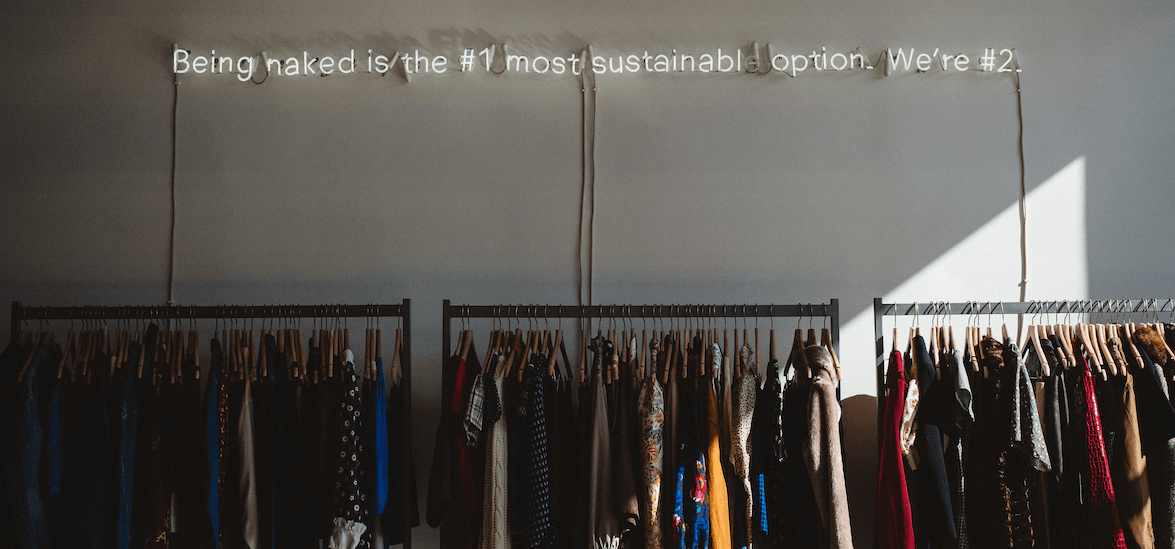Are sustainable fashion brands worth it for students?
The short answer to this is yes. Sustainable consumption is more expensive, but it is worth it. As a student, the reality is that we don’t have as much spare cash as we might like to fund our shopping habits – I certainly don’t. So, buying from sustainable brands with a smaller budget is limiting.
There is no denying that there has been a massive push towards manufacturing more sustainable clothing, but it is still an upward battle to find a brand with items you actually want to wear. The main exceptions for me are Weekday, TALA, ASOS and Reserved.
TALA is an amazing and completely sustainable option
Weekday has a sleek and effortless aesthetic with clean-cut silhouettes making it one of my go-to shops, regardless of its sustainability. Their sales and 10% discount, if you hand in a bag of clothes/textiles, make it even more financially accessible for students.
ASOS has a responsible filter and supplies the modern clothing line COLLUSION that mostly uses sustainably sourced cotton. Reserved stocks an eco-aware range but, personally only the Joyful #EcoAware limited collection stands out to me. If you’re interested in an athleisure look, or just want new gym wear, TALA is an amazing and completely sustainable option. As it is still relatively in its startup phase there are no student discounts but, with clothing prices ranging from £22-50, it isn’t completely unattainable.
If none of these are to your taste then H&M, Lindex and Know The Origin might be worth a try; although I highly recommend the brands mentioned above over these. H&M also rewards you with a £5 voucher, per any sized bag of clothing/textiles handed in store, which is valid for every £25 spent.
Cotton production uses a lot more water and land than polyester
Perhaps consider the materials of the garment as polyester (a synthetic fabric) has a larger carbon footprint and isn’t biodegradable like cotton. Despite this, cotton production uses a lot more water and land than polyester. If you find that you really cannot make the jump to buying sustainably you could try making dietary changes by incorporating more vegetarian or vegan meals into your week, as meat and dairy companies have a larger environmental impact compared with the fashion industry.
Many companies are experimenting with different types of materials to try and make their products sustainable. More recently, lingerie brands have considered the amount of material that ends up wasted, how they dye their pieces and where they source their fabrics from. Lara Intimates is a great example of a more ethical, inclusive clothing brand. They source from unwanted materials and have a zero-waste policy.
There is a price difference if you’re buying sustainably but this gap is slowly closing. This is making it increasingly reasonable for students to shop sustainable brands. I think it’s important to be aware that buying new and sustainable can mean you cannot compromise on price, a habit we have become used to.
Buying sustainably through second-hand is a lot more attractive and achievable for students
We have to be comfortable with the idea of buying slightly more expensive items that are higher quality and less frequently; making investments rather than acting on impulse. Grace Beverley, founder and director of TALA, on the ‘Blogosphere: Serious Influence’ podcast stated “the idea is still there, that everything should be £5, £6…..when first of all you’re really compromising someone else’s quality of life. But also, you’re compromising the environment, you’re compromising the quality because you’re going to wear it once if that. And it’s not really worth it.”
However, we all know buying sustainably through second-hand is a lot more attractive and achievable for students. I don’t feel as guilty buying a new outfit for under £15 when I go to a charity shop, eBay or find a steal on Depop. I like the hunt for second hand but there’s no denying that students would probably be more sustainable if they could buy new and from a wider range of sustainable shops that didn’t compromise on style.

Comments